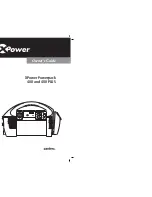
Calibration
Allow at least 5 minutes warm-up before commencing calibration.
Access to Calibration Adjustments
All adjustments are on the front panel control board; all the trimmers are adjusted from the
reverse side of the board through holes in the board. To gain access to the board it is necessary
to remove the top cover.
WARNING!
When the instrument is connected to its supply the removal of covers is likely to expose live parts.
The instrument should be disconnected from all voltage sources before it is opened for any
adjustment, replacement, maintenance or repair. Capacitors inside the power supply may still be
charged even if the power supply has been disconnected from all voltage sources but will be
safely discharged about 5 minutes after switching off power.
Any adjustment, maintenance and repair of the opened instrument under voltage shall be avoided
as far as possible and, if inevitable, shall be carried out only by a skilled person who is aware of
the hazard involved.
Remove the 6 side screws and front handle screw to release the top cover.
Control pcb calibration points (viewed from rear)
Equipment Required
A 5½ digit multimeter with better than 0.05% accuracy on dc volts and better than 0.1% accuracy
on dc current (to 5A); alternatively use a precision shunt for current measurement.
Rheostat or other high power load arrangement to provide up to 5A load at 35V.
Voltage Calibration
Connect the DMM (set to Volts) across the output. Set voltage and current controls to minimum.
Switch output ON (Check LED is on) and check for a reading of 00.0V ± 0.1V on the Volts display
and DMM; check the Amps display reads 0.00 ± 0.01A.
Set voltage and current controls to maximum. Adjust VR5 (maximum output volts) for a reading of
35.16V to 35.24V on the DMM. Adjust VR6 (measured output volts) until the Volts display
matches the reading on the external DMM.
Switch output OFF. Adjust VR10 (preset volts) until the Volts display shows 35.2.
9











































